Human Rights: No Right Angles
Canadian Museum for Human Rights inspires reflection
on past and present human rights struggles
When I took visiting family to the Canadian Museum for Human Rights, the woman who greeted us at the door told us to look up at the odd angles. “There are no right angles in this museum,” she said. Architect Antoine Predock said you cannot box in human rights.
It was not my first visit to the museum, located in my home city of Winnipeg, Manitoba. I’ve written about the Canadian Museum for Human Rights, about its architecture symbolizing the idea of an upward struggle for human rights as a journey of hope, about its exhibits designed to encourage discussion and inspire action. But each visit is unique. I find a new exhibit. I delve into a story I’ve passed by before. I bring a different perspective to a story and see it from a new angle.
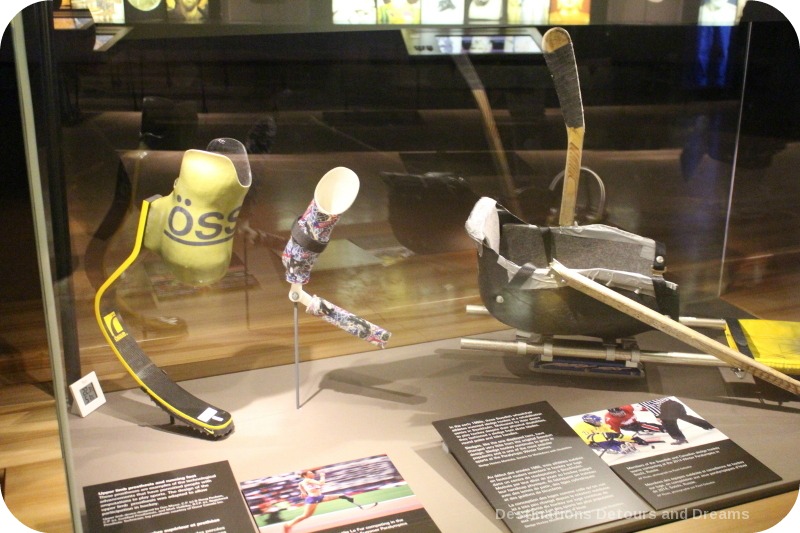
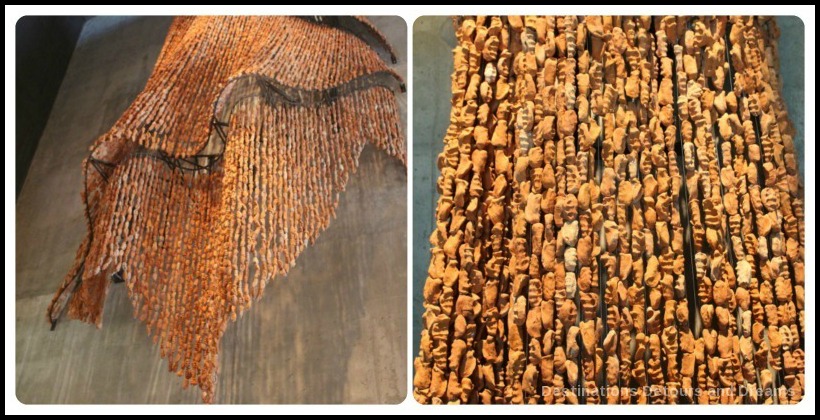
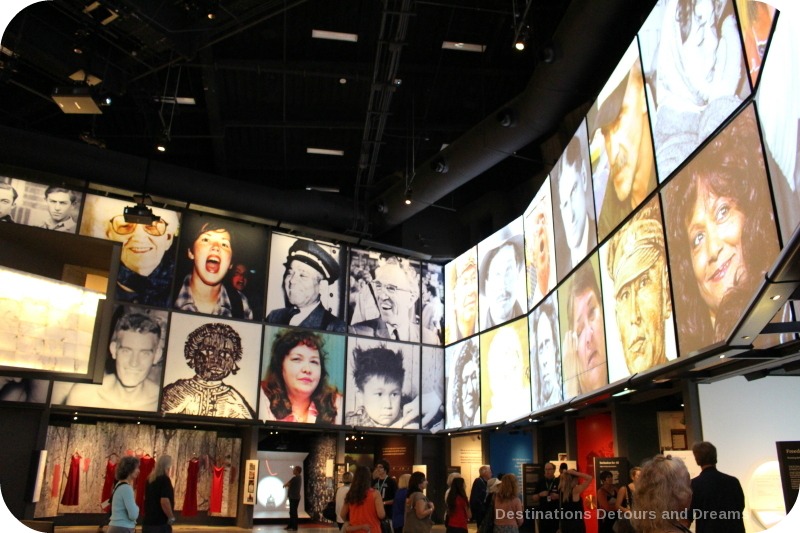
The ramps between galleries are lined with Spanish alabaster lit from the inside with LED lights. More light comes in through windows as one progresses upward, representing a journey of light through darkness. In early history, essential oils and medicines were stored in alabaster jars. The choice of alabaster symbolizes a process of healing. The ramp between the fourth and fifth floors is the longest. The fourth floor contains Holocaust and genocide stories. It is the darkest gallery, literally and figuratively. More “healing” time for reflection is given after that gallery.
I personally find the Holocaust gallery the hardest to go through. I know it is important to remember these stories, but find I can only handle a little at a time. This visit I watched a film highlighting Canadian news coverage about Nazi persecution of the Jews in the late 1930s. It was disturbing to see anti-Semitic sentiments published in Canadian newspapers and the refusal to accept Jewish refugees. In 1938, delegates from thirty-two countries met at the French resort of Evian to discuss the refugee crisis. During the nine-day summit countries expressed sympathy, but in the end only the tiny Dominican Republic agreed to accept more refugees.
I knew Jewish refugees fleeing the Nazis had settled in the Dominican Republic. On vacations in the island several years ago, I visited the town of Sosúa. I was there primarily because of its beautiful beach, but I also wandered through the town. The town was created in the early 1940s by German and Austrian Jewish refugees. The Dominican government provided them with land and resources to build a dairy and cheese factory. But it was disturbing to think no other country stepped up. It was ironic on a couple of levels that the country which did step up was the Dominican Republic. The Dominican Republic is one of the poorest countries in the Caribbean. (I recently sailed to the Dominican Republic on a Fathom Impact trip and volunteered at various community-development projects while docked near Puerto Plata.) In 1938, the Dominican Republic was ruled by brutal dictator Rafael Trujillo, responsible for a genocidal massacre of Haitians within the borders of the Dominican Republic.
In spite of the darkness on the fourth floor, the overall tone of the museum is one of hope and inspiration. We moved quickly from that gallery to galleries featuring individuals and groups who have made a difference and continue to fight for rights for all peoples. We read about positive turning points in the struggle.
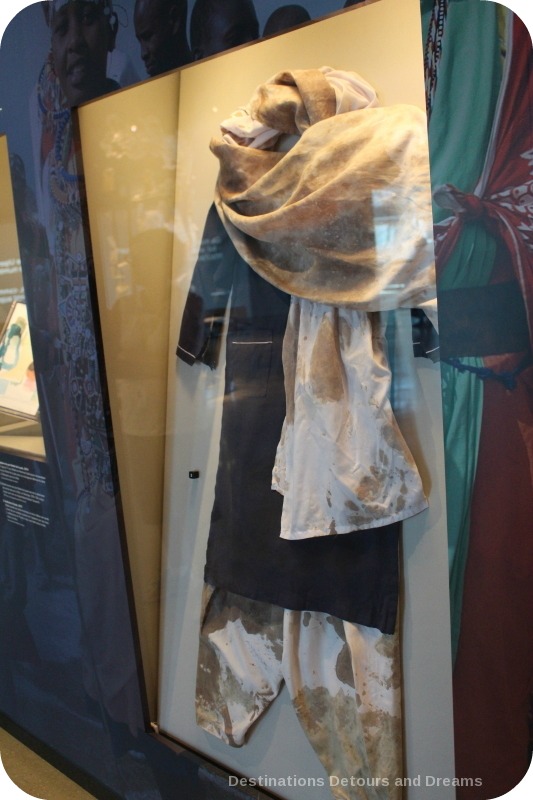
My visiting family and I had different reactions at the museum. The message my sister took away from the museum was about how far we had come in the struggle for human rights. My sister-in-law was struck by how very, very recent recognition of fundamental rights had been. I looked at the timeline in the What is Human Rights? gallery, where the most recent item dated to 2012, and wondered how the museum would re-arrange the information boards to include what is happening in the world right now. I wondered what the new boards would say. Would the timeline information speak about darkness and human rights abuses? Or would the message be one of light, highlighting another turning point because enough people took action for positive social change?
Remembering the stories of human rights abuses and the struggles for basic dignity reminds us how precious and fragile those rights are. It is good to reflect on what human rights mean to us, be reminded that individuals can make a difference and think about our own roles in the struggle. Antoine Predock was right. You cannot box in human rights. The stories, the struggles, the abuses and the victories continue. We should not box in our thinking, our dreams and the capacity to take action.
If you’ve visited the Canadian Museum for Human Rights or another human rights exhibit elsewhere in the world, what was your reaction?
Destinations Detours and Dreams monthly e-newsletter contains behind the scenes information, sneak peeks ahead, travel story recaps and more. SIGN UP HERE

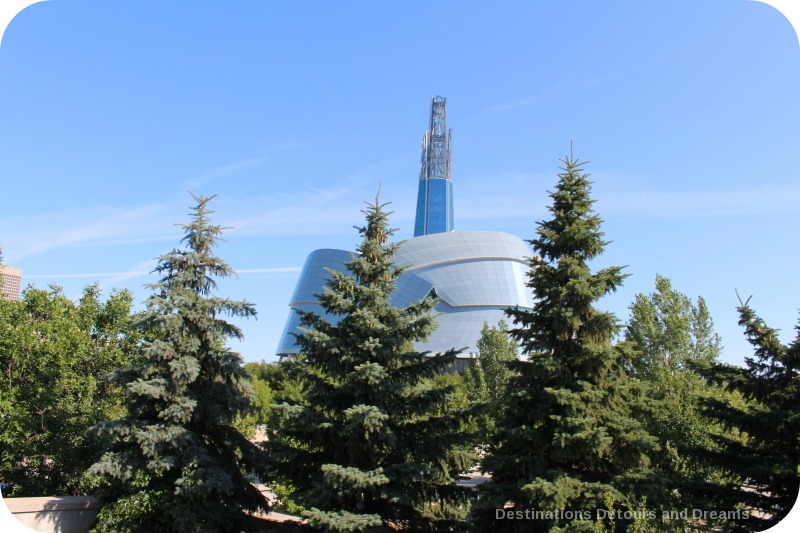
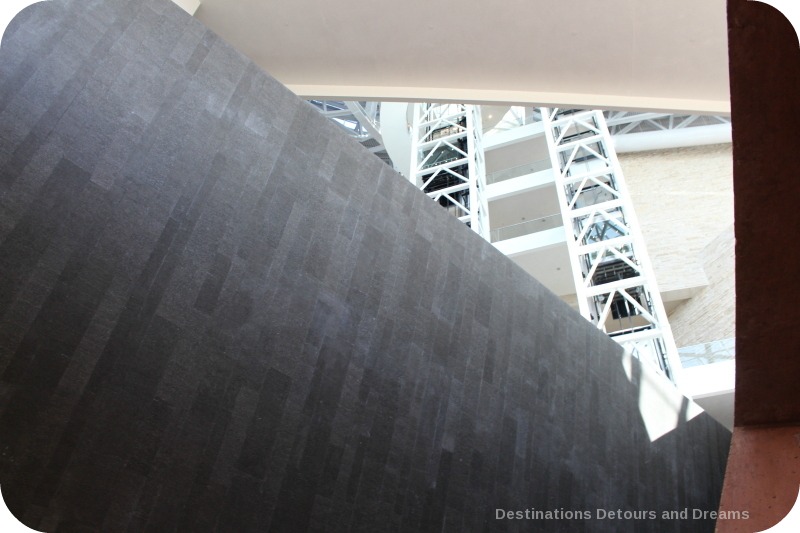
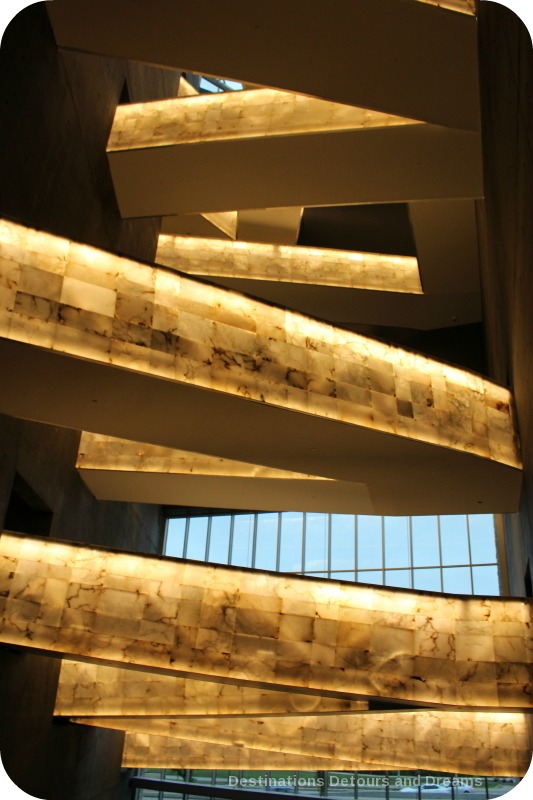
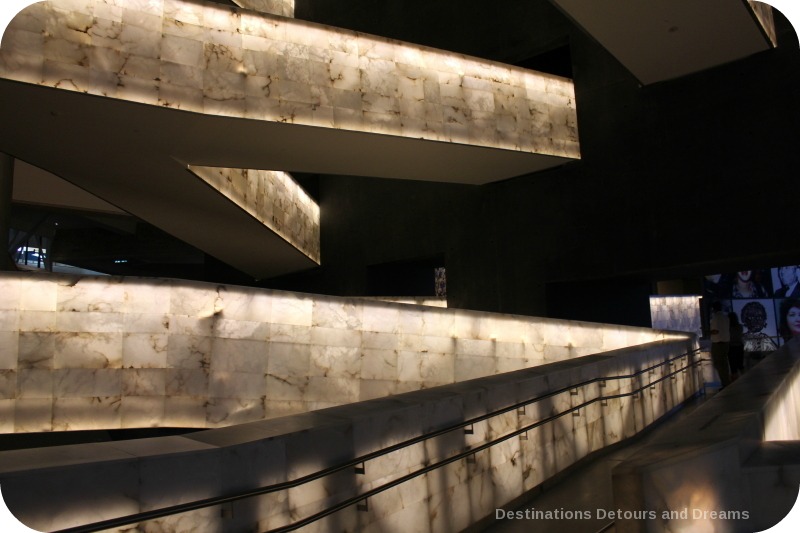
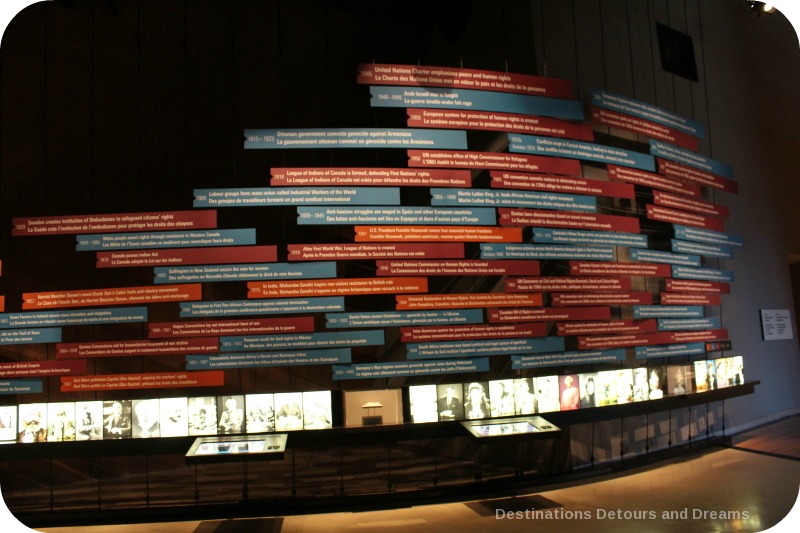
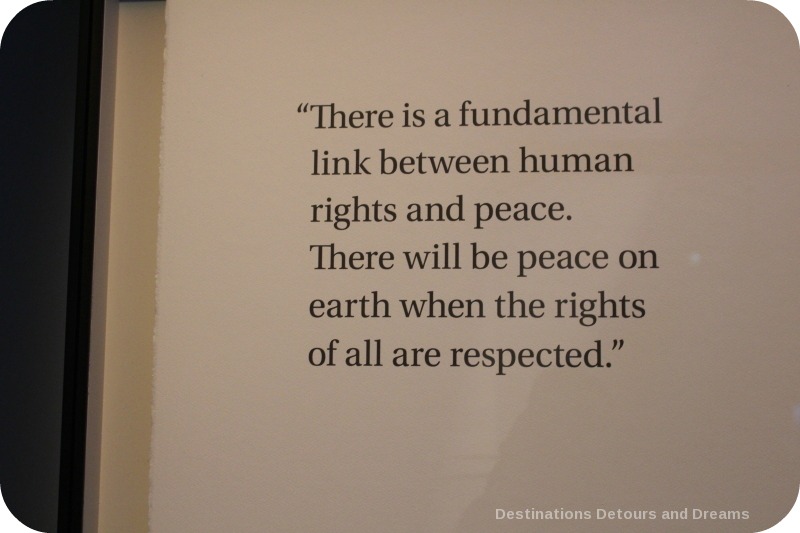
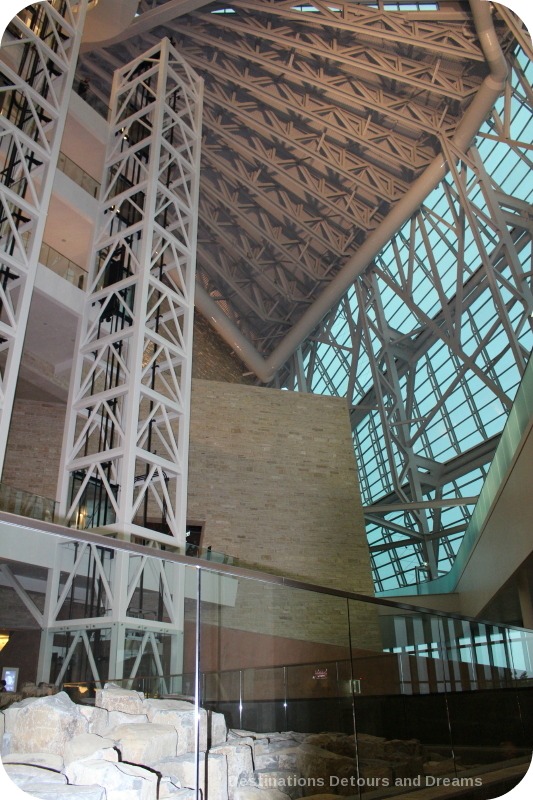
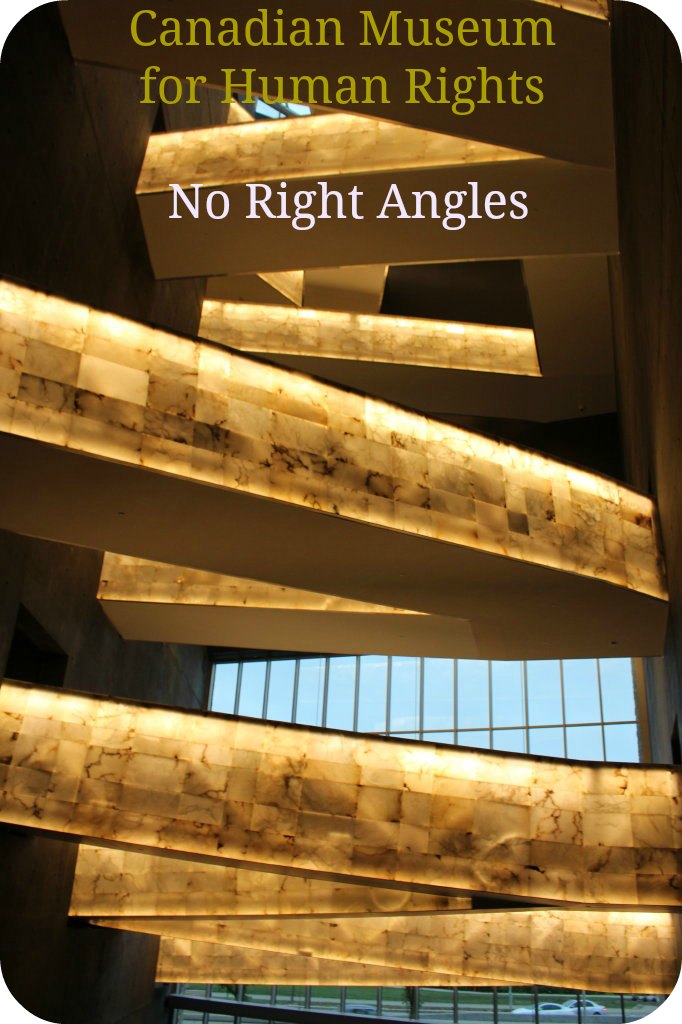
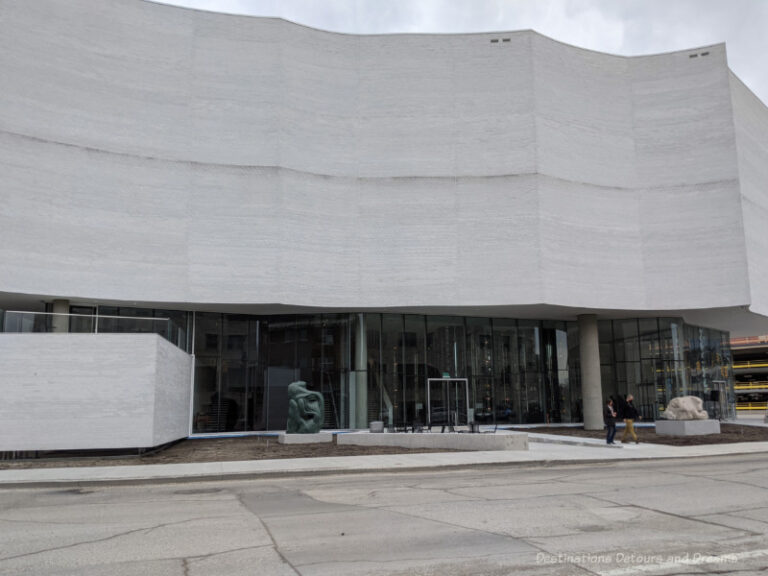
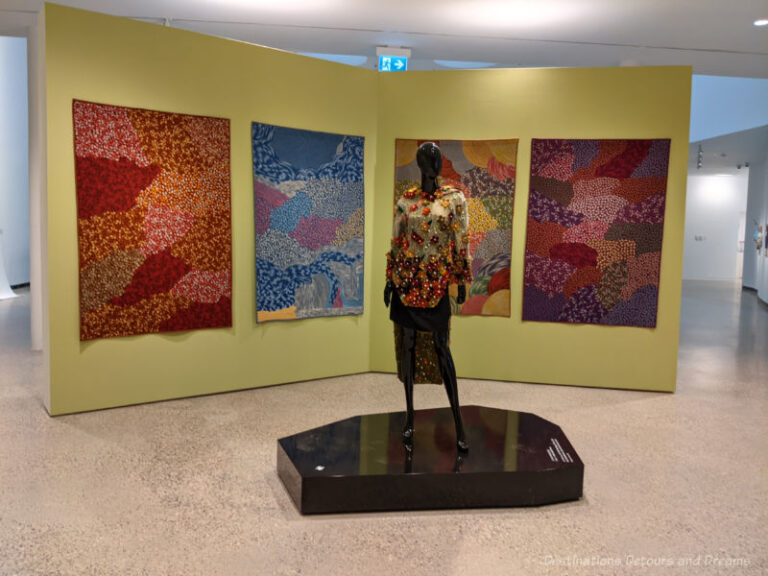
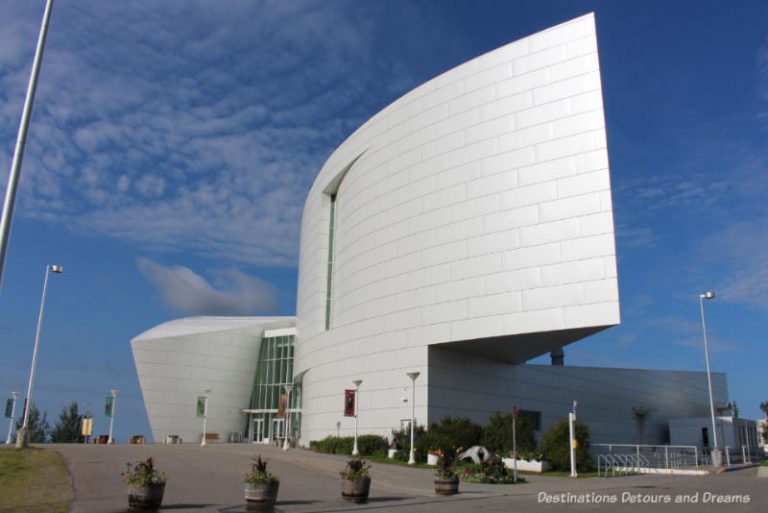
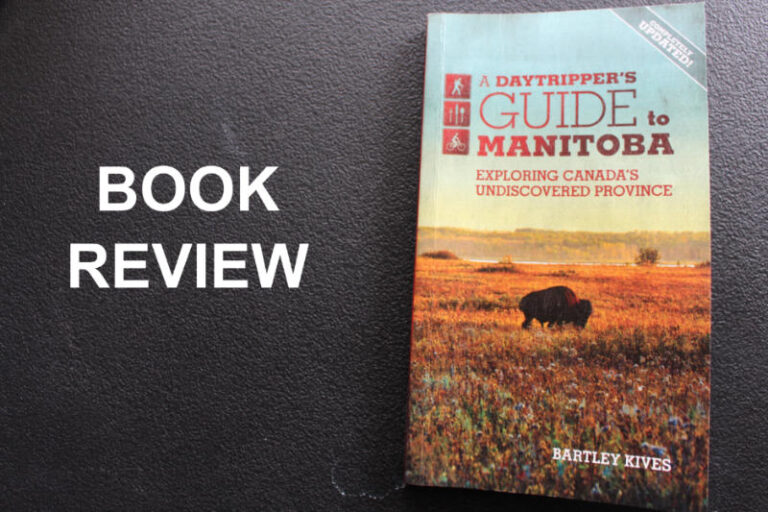
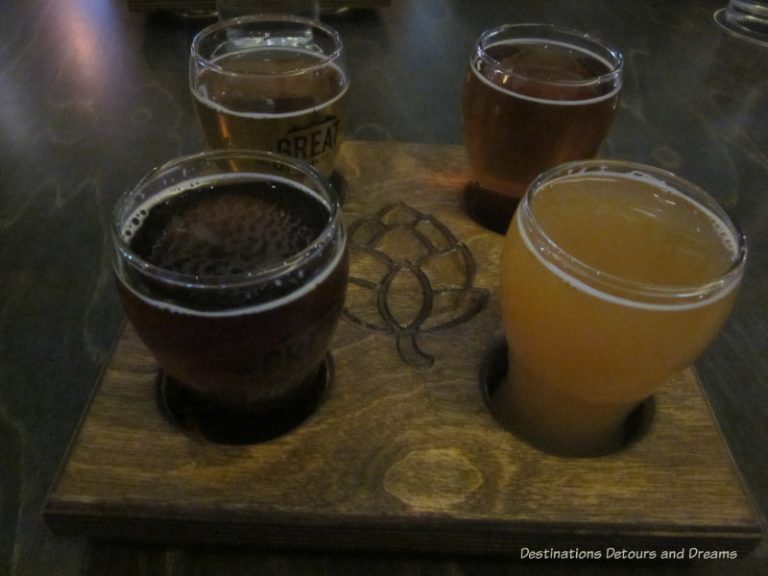
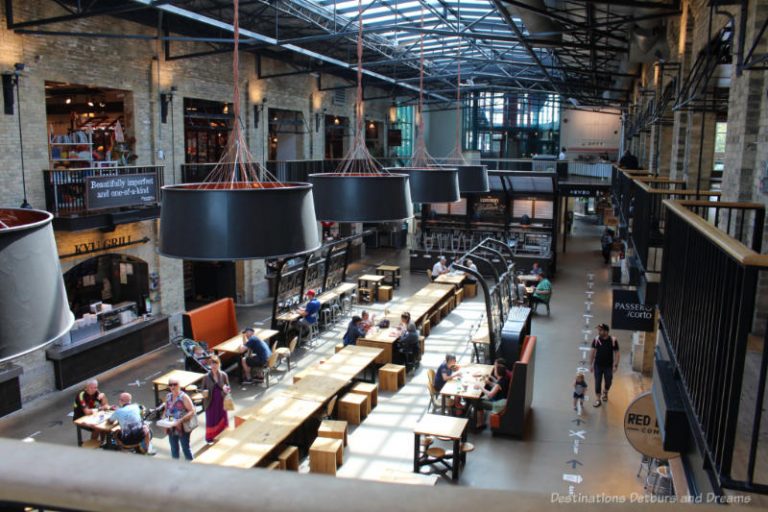
Interesting and sobering!
Jacquie, sobering indeed. The museum encourages reflection. It also highlights a lot of inspiring stories about people who made a difference.
I really need to visit this museum. Just didn’t have time the last time I was in Ottawa and heard it was amazing. Thanks for sharing what it was like. I too would find the Holocaust gallery difficult but necessary to walk through.
Janice, the museum is actually in Winnipeg. It is definitely worth a visit.
Looks like a great museum! We are in Canada right now, but a long way from Winnipeg in the 1000 Islands area of Ontario. We’ll have to stop sometime if we make a trek west.
Veronica, the museum is a “must-see” list if in this area. I have not been to the 1000 Islands area, but remember my grandmother raving about years ago after she’d visited. I’ll have to get there someday.
The Canadian Museum for Human Rights sounds inspiring and I love that there are multiple symbolic meanings to be found and explained throughout the architecture, the walls and even the lighting. I remember being totally dumbfounded years ago when I learned that the US (that beacon of hope and refuge…) had slammed its doors shut to the European refugees so I imagine that this had to have been disappointing to you as well. And, I have a fascinating corollary to your story (to me anyway 🙂 ) about the DR’s acceptance of the European Jewish refugees that I learned while we lived there for several weeks in the spring of 2015. Rafael Trujillo, whom you mentioned as responsible for the massacre/genocide of the Haitians in the DR, accepted the European Jews only as an attempt to “whiten” the population of the DR rather than it being a gesture of humanitarianism. Ironic, huh Donna? But it definitely shows that he was nasty to the core. Anita
Anita, very disappointing that so many countries slammed their doors to the refugees and disappointing to see history repeat. And Trujillo was definitely nasty to the core. He becomes worse and worse the more I learn about him.
Yes, I remember your previous article on this. It was cool Malala’s dress was obtained by this particular museum. The only one other one I have been to was the Martin Luther King Historical Site.
Carol, Malala’s dress is on loan from her until March 2017.
I have never been. I can certainly understand that it would be difficult to go through the Holocaust gallery – the atrocities that happened, and how people dealt with them..even now are still very raw for some. It is sad that there have been many human rights abuses through out our time… thank you for sharing this.